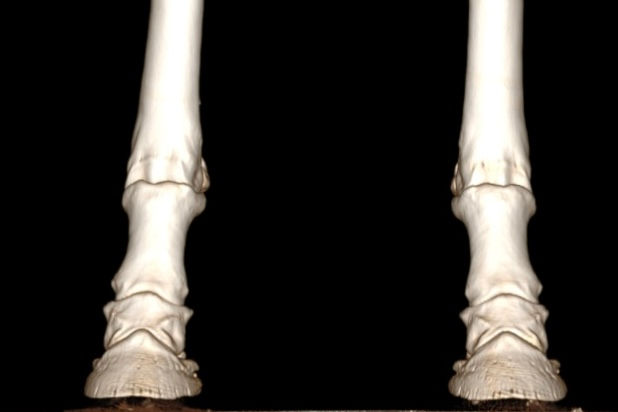Common Practices Leading to Horses Pulling Shoes and Effective Alternatives
- Rocking Speer Ranch, LLP Farrier Services

- Aug 25, 2024
- 3 min read

Common Practices Leading to Horses Pulling Shoes and Effective Alternatives
Horse owners often face the frustrating issue of their horses pulling shoes. While some cases are unavoidable, many instances result from common practices that inadvertently increase the likelihood of this happening. Understanding these practices and implementing effective alternatives can help retain shoes throughout the cycle, ensuring better hoof health and overall horse well-being.
Overgrown Hooves
Common Practice: Allowing hooves to become overgrown between farrier visits is a frequent issue. Overgrown hooves can cause uneven weight distribution and increased stress on the shoes, making them more prone to being pulled off.
Alternative: Schedule regular farrier visits every 4-8 weeks, depending on your horse's growth rate. Work with your farrier to determine the correct cycle length. Regular trimming keeps hooves at an optimal length, reducing the risk of shoes being pulled off due to overgrown and uneven hooves. Maintaining a consistent hoof care routine not only prevents overgrowth but also ensures that any minor hoof issues are addressed before they become major problems.
Turnout in Muddy Areas
Common Practice: Turning horses out in muddy areas, such as ponds or fields with mud, can cause shoes to be pulled off due to the suction created by the mud. When the horse lifts its hoof, the mud creates a vacuum effect that can pull the shoe off, especially if the shoe is already loose or improperly fitted.
Alternative: Manage turnout areas to avoid deep mud and wet conditions as much as possible. Opt for well-drained paddocks or provide dry lots to prevent excessive mud. During wet seasons, consider limiting turnout time or rotating pasture areas to allow for better ground conditions. Additionally, installing proper drainage systems in pastures can help keep the areas drier and reduce the risk of suction-related shoe loss. If muddy conditions are unavoidable, using bell boots can provide extra protection against shoe loss.
Incorrect Shoeing Techniques
Common Practice: Improper shoeing techniques, such as incorrect nail placement or using shoes that do not fit well, can cause shoes to become loose or more easily pulled off.
Alternative: Ensure that a qualified and experienced farrier shoes your horse. The farrier should use the correct size shoes and place nails (Above bottom 1/3)
appropriately to secure the shoe firmly. Regular communication with the farrier about any issues your horse experiences can also help in adjusting the shoeing method to better suit your horse's needs. A well-fitted shoe that accommodates the horse's hoof shape and size is crucial for shoe retention.
Lack of Proper Booting
Common Practice: Not using protective boots during turnout or exercise can lead to shoes being pulled off, especially in horses prone to overreaching (when the hind hoof strikes the front hoof) or in high-activity situations.
Alternative: Use bell boots or overreach boots to protect the front hooves from being struck by the hind hooves. These boots provide an additional layer of protection, reducing the risk of shoes being pulled off during turnout or exercise. Ensure the boots fit well and are comfortable for the horse. Using the right type of boots can make a significant difference, particularly for horses that are active or have a tendency to overreach.
Improper Exercise Routines
Common Practice: Exercising horses on inappropriate surfaces, such as hard, uneven, or excessively slippery ground, increases the likelihood of shoes being pulled off. The stress and impact from such surfaces can loosen or dislodge shoes.
Alternative: Choose suitable exercise surfaces that provide adequate traction and cushioning, such as well-maintained arenas with appropriate footing. Avoid exercising on excessively hard or slippery surfaces. Gradually condition your horse to different surfaces to build hoof and leg strength, which can help in shoe retention. Ensuring that exercise routines are appropriate for the horse's condition and training level can also prevent excessive stress on the hooves and shoes.
Additional Tips for Retaining Shoes
Regular Inspections: Frequently check your horse’s shoes and hooves for signs of wear, damage, or looseness. Addressing issues early can prevent shoes from being pulled off.
Balanced Diet: Ensure your horse has a balanced diet that supports strong hoof growth. Supplements containing biotin, methionine, and zinc can promote healthier hooves, making them less prone to issues that cause shoe loss.
Proper Fit: Ensure that the shoes fit your horse's hooves correctly. Shoes that are too small or too large can cause discomfort and increase the likelihood of being pulled off.
Environmental Considerations: Be mindful of environmental factors, such as weather and terrain, that can impact shoe retention. Adjust your horse’s turnout and exercise routines accordingly to minimize risks.
By understanding and addressing these common practices, horse owners can significantly reduce the incidence of pulled shoes. Regular farrier visits, proper turnout and exercise management, the use of protective gear, and attention to hoof health are all crucial steps in ensuring that shoes stay on throughout the cycle, promoting better hoof and overall health for your horse. Implementing these alternatives not only helps in retaining shoes but also contributes to the overall well-being and performance of the horse.



Comments